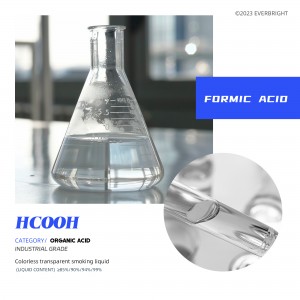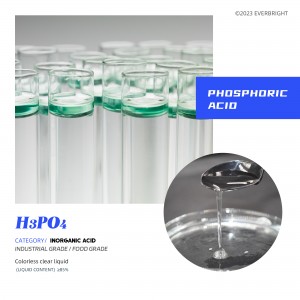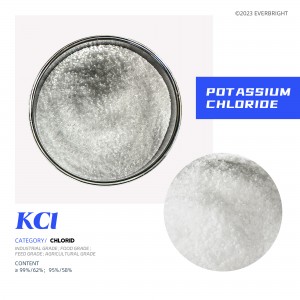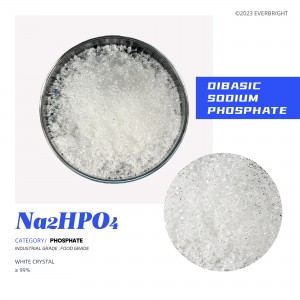-

Urea
It is an organic compound composed of carbon, nitrogen, oxygen and hydrogen, one of the simplest organic compounds, and is the main nitrogen-containing end product of protein metabolism and decomposition in mammals and some fish, and urea is synthesized by ammonia and carbon dioxide in industry under certain conditions.
-

Ammonium Bicarbonate
Ammonium bicarbonate is a white compound, granular, plate or columnar crystals, ammonia odor. Ammonium bicarbonate is a kind of carbonate, ammonium bicarbonate has ammonium ion in the chemical formula, is a kind of ammonium salt, and ammonium salt can not be put together with alkali, so ammonium bicarbonate should not be put together with sodium hydroxide or calcium hydroxide.
-

Formic acid
A colorless liquid with a pungent odor. Formic acid is a weak electrolyte, one of the basic organic chemical raw materials, widely used in pesticides, leather, dyes, medicine and rubber industries. Formic acid can be directly used in fabric processing, tanning leather, textile printing and dyeing and green feed storage, and can also be used as metal surface treatment agent, rubber auxiliary and industrial solvent.
-

Phosphoric acid
A common inorganic acid, phosphoric acid is not easy to volatilize, not easy to decompose, almost no oxidation, with acid commonness, is a ternary weak acid, its acidity is weaker than hydrochloric acid, sulfuric acid, nitric acid, but stronger than acetic acid, boric acid, etc. Phosphoric acid is easily deliquified in the air, and heat will lose water to get pyrophosphoric acid, and then further lose water to get metaphosphate.
-

Potassium Carbonate
An inorganic substance, dissolved as a white crystalline powder, soluble in water, alkaline in aqueous solution, insoluble in ethanol, acetone, and ether. Strong hygroscopic, exposed to the air can absorb carbon dioxide and water, into potassium bicarbonate.
-

Potassium Chloride
An inorganic compound resembling salt in appearance, having a white crystal and an extremely salty, odorless, and nontoxic taste. Soluble in water, ether, glycerol and alkali, slightly soluble in ethanol, but insoluble in anhydrous ethanol, hygroscopic, easy to caking; The solubility in water increases rapidly with the increase of temperature, and often redecomposes with sodium salts to form new potassium salts.
-

Sodium Dihydrogen Phosphate
One of the sodium salts of phosphoric acid, an inorganic acid salt, soluble in water, almost insoluble in ethanol. Sodium dihydrogen phosphate is a raw material for the manufacture of sodium hempetaphosphate and sodium pyrophosphate. It is colorless transparent monoclinic prismatic crystal with a relative density of 1.52g/cm².
-

Dibasic Sodium Phosphate
It is one of the sodium salts of phosphoric acid. It is a deliquescent white powder, soluble in water, and the aqueous solution is weakly alkaline. Disodium hydrogen phosphate is easy to weather in the air, at room temperature placed in the air to lose about 5 crystal water to form heptahydrate, heated to 100℃ to lose all the crystal water into anhydrous matter, decomposition into sodium pyrophosphate at 250℃.
-

Ammonium Sulfate
An inorganic substance, colorless crystals or white particles, odorless. Decomposition above 280℃. Solubility in water: 70.6g at 0℃, 103.8g at 100℃. Insoluble in ethanol and acetone. A 0.1mol/L aqueous solution has a pH of 5.5. The relative density is 1.77. Refractive index 1.521.
-

Magnesium Sulphate
A compound containing magnesium, a commonly used chemical and drying agent, consisting of the magnesium cation Mg2+ (20.19% by mass) and the sulfate anion SO2−4. White crystalline solid, soluble in water, insoluble in ethanol. Usually encountered in the form of the hydrate MgSO4·nH2O, for various n values between 1 and 11. The most common is MgSO4·7H2O.
-

Ferrous Sulfate
Ferrous sulfate is an inorganic substance, the crystalline hydrate is heptahydrate at normal temperature, commonly known as “green alum”, light green crystal, weathered in dry air, the surface oxidation of brown basic iron sulfate in humid air, at 56.6℃ to become tetrahydrate, at 65℃ to become monohydrate. Ferrous sulfate is soluble in water and almost insoluble in ethanol. Its aqueous solution oxidizes slowly in air when it is cold, and oxidizes faster when it is hot. Adding alkali or exposure to light can accelerate its oxidation. The relative density (d15) is 1.897.
-

Ammonium Chloride
Ammonium salts of hydrochloric acid, mostly by-products of the alkali industry. Nitrogen content of 24% ~ 26%, white or slightly yellow square or octahedral small crystals, powder and granular two dosage forms, granular ammonium chloride is not easy to absorb moisture, easy to store, and powdered ammonium chloride is more used as a basic fertilizer for the production of compound fertilizer. It is a physiological acid fertilizer, which should not be applied on acidic soil and saline-alkali soil because of more chlorine, and should not be used as seed fertilizer, seedling fertilizer or leaf fertilizer.







